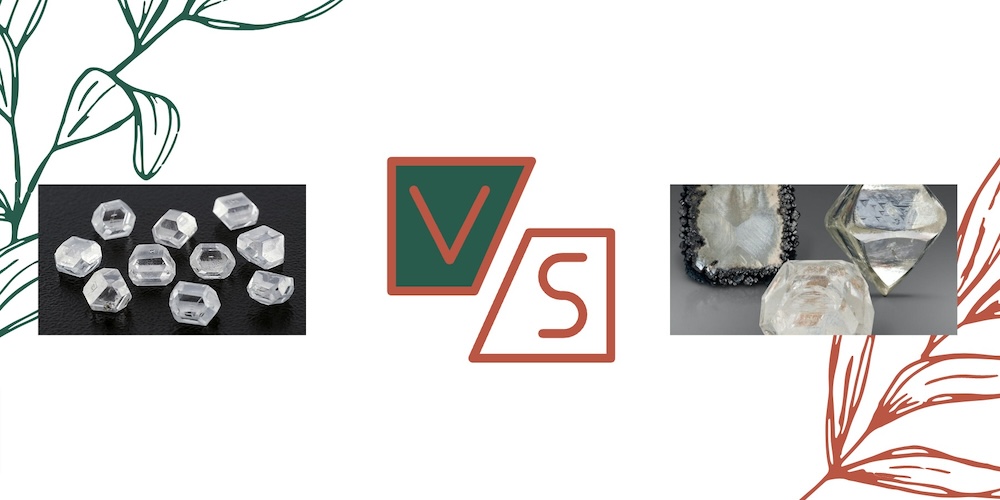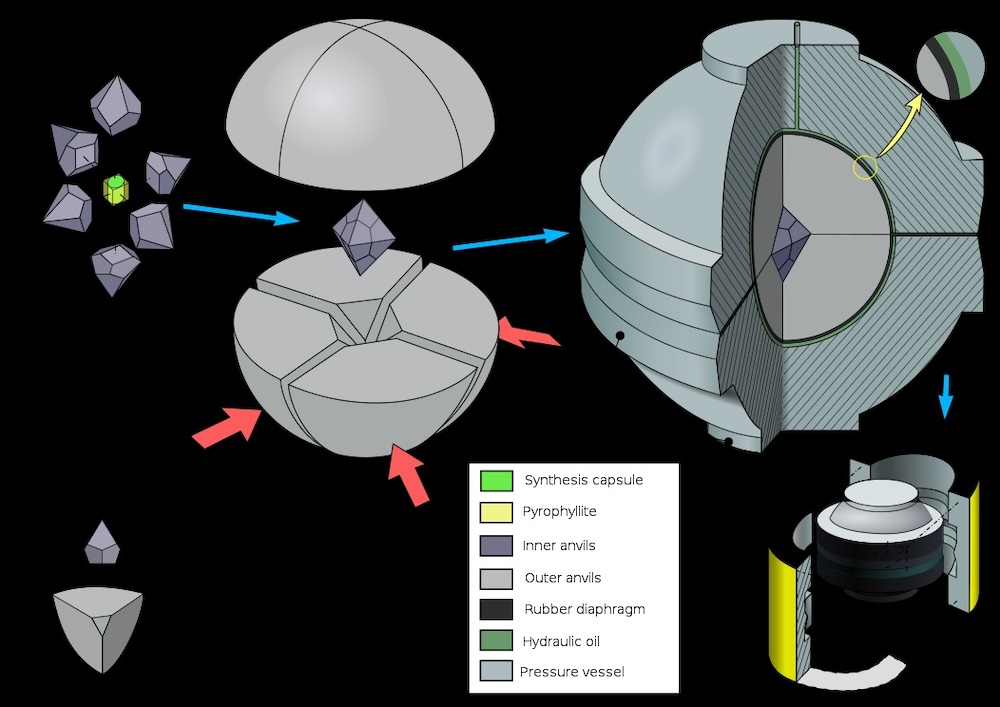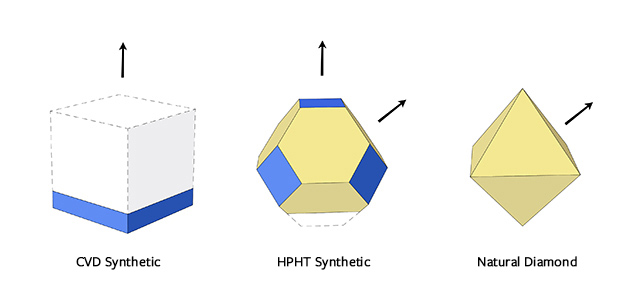©2024 Lab Diamonds Reviews – All Right Reserved.
Education
HPHT vs CVD Lab Diamonds

This article has mentions of products from one or more companies, and I may receive compensation if you purchase those products following reading my recommendations.
Lab-grown diamonds have become a significant part of the jewelry industry, offering an alternative to natural diamonds. First created in laboratories in the 1950s for industrial uses, it’s only recently that gem-quality diamonds have been produced in commercial quantities. Their rising popularity is attributed to advancements in technology and a shift towards more affordable pricing. As consumers become more aware of these diamonds, understanding the processes behind their creation becomes crucial. The two predominant methods for producing lab-grown diamonds are High Pressure High Temperature (HPHT) and Chemical Vapor Deposition (CVD), each with unique characteristics and implications.
What's In This Guide
ToggleLooking for exceptional quality in lab-grown diamonds? Whiteflash is your go-to destination. Renowned for their premium quality lab diamonds, they ensure you get the brilliance and clarity you deserve. Don’t forget to explore Brilliant Earth for unique colored diamonds, and Blue Nile for an extensive selection.
Understanding the HPHT Process
The HPHT method replicates the natural conditions under which diamonds are formed in the earth. It involves using large metal presses to create extreme pressure and temperature, transforming carbon into diamonds. This process demands significant investment in terms of equipment and expertise, leading to higher production costs.

HPHT Method
Despite this, HPHT diamonds are known for their quality. The process, however, is not without challenges. It requires substantial energy, and the intensive method limits the quantity of diamonds that can be produced at a time. The higher costs associated with HPHT diamonds often reflect in their market pricing, acting as a support for lab-grown diamond prices overall.

Crystals shapes (from left to right): CVD synthetic, HPHT synthetic and natural diamond.
Exploring the CVD Process
In contrast, the CVD process uses a vacuum chamber and a plasma reactor. Carbon atoms are “rained” onto a seed plate in a controlled environment, layer by layer, to form diamonds. CVD reactors are smaller and more affordable compared to HPHT presses, offering a built-in cost advantage. This has led to a proliferation of CVD diamonds in the market, with many new entrants trying their hand at diamond production. While this increases the overall supply, it also results in a higher volume of lower quality diamonds at cheaper prices. Most CVD diamonds require post-growth treatments to enhance their marketability. However, as the technology matures, the quality of CVD diamonds is expected to improve, making them a prominent player in the lab-grown diamond market.

GIA’s CVD Diamond Growth Facility
Comparative Analysis: CVD vs HPHT
While both HPHT and CVD methods produce high-quality diamonds, they have distinct differences. HPHT’s high investment and expertise yield diamonds that are often more expensive but of superior quality. On the other hand, the CVD process, being more cost-efficient, leads to a larger number of diamonds, including those of lower quality. Each method imparts specific defects to the diamonds, which not only affects their quality but also enables experts to identify the growth method used. Understanding these differences is key to evaluating lab-grown diamonds for their true value and quality.
Brilliant Earth offers a stunning range of colored lab-grown diamonds, perfect for those seeking something unique. For top-notch quality, check out Whiteflash’s collection, and if variety is what you’re after, Blue Nile’s extensive selection is worth exploring.
Pricing Dynamics in the Lab-Grown Diamond Market
The pricing of lab-grown diamonds is influenced by various factors including the cost structures of different producers and the quality of the diamonds. Variations in pricing practices arise due to differences in growth methods and treatment techniques. It’s important for consumers to be aware that some quality factors, like transparency deficits, might not be evident in diamond reports. Therefore, dealing with knowledgeable and reputable merchants who vet diamonds for a full range of potential problems is crucial for ensuring value in a lab diamond purchase.
Environmental Considerations and Sustainability
Sustainability is a growing concern in the diamond industry, and lab-grown diamonds are often seen as a greener alternative to mined diamonds. However, the environmental impact is complex. The production of lab-grown diamonds consumes a significant amount of electricity, with some producers turning to renewable energy sources. While CVD is more energy efficient than HPHT, the latter might become more sustainable as technology advances and access to renewable energy improves. Additionally, the natural diamond mining industry provides significant socioeconomic benefits to communities, a factor where the lab-grown industry currently falls short.
Conclusion
Lab-grown diamonds, particularly through HPHT and CVD processes, represent a dynamic and evolving segment of the jewelry industry. With their rise in popularity and affordability, these diamonds offer an alternative to traditional mined diamonds, aligning with modern consumer preferences and ethical considerations. While each method—HPHT and CVD—has its unique attributes and challenges, both contribute significantly to the market, offering choices in terms of quality and price. As the industry continues to advance, with improvements in technology and a growing focus on sustainability, lab-grown diamonds are poised to play an increasingly important role in the global diamond market.
Blue Nile boasts a vast selection of lab-grown diamonds, catering to all preferences and styles. For the finest quality, consider Whiteflash’s exquisite range. If you’re drawn to colored diamonds, Brilliant Earth has an impressive assortment to choose from.
